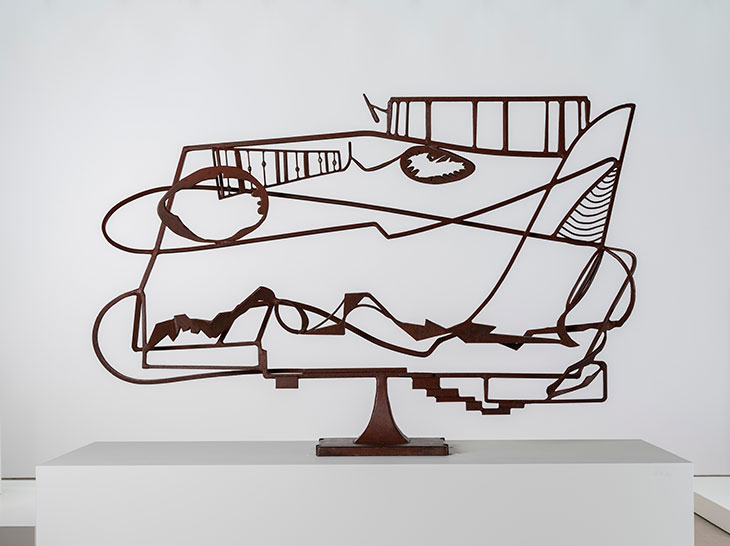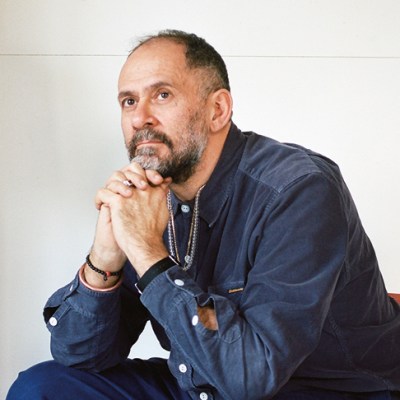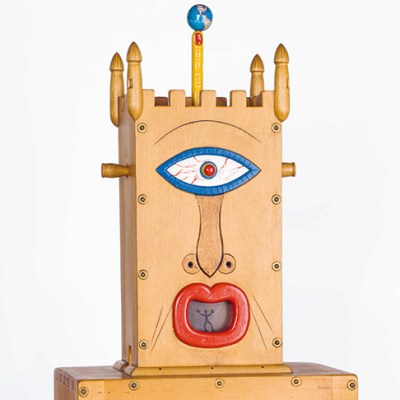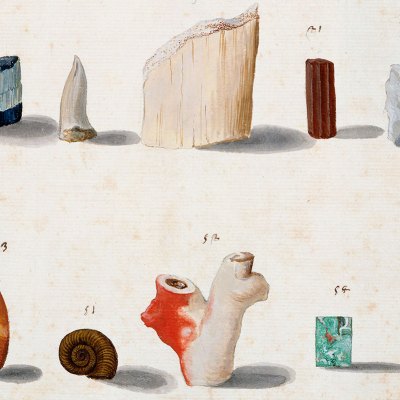‘Sculpture,’ wrote David Smith in 1951, ‘is as free as the mind; as complex as life’. That freedom and complexity is on full display in this exhilarating show of more than 40 pieces by the artist generally regarded as the dominant sculptor of Abstract Expressionism. Ranging across three decades, it traces Smith’s development, from early wooden constructions to his geometric balancing acts in painted steel.
Hailing from the Midwest, Smith began his studies at Ohio University. But it was during a spell spent welding and riveting steel at the Studebaker car plant that his passion for industrial materials and techniques was ignited. In 1926 he moved to New York, where he enrolled in painting classes at the Art Students League. The teachings of the painter Jan Matulka (1890–1972), who spread the gospels of Cubism and Russian Constructivism, proved particularly influential. In the welded sculptures of Picasso and González, Smith would later find the language to express his own artistic vision.
Head (1932), David Smith. Photo: Jonty Wilde. Courtesy YSP; © The Estate of David Smith/VAGA, New York

Sculptures emerged out of the ‘nobility of junk’ – discarded tools, mechanical parts and offcuts found in factories. Accumulated piece upon piece, the sculptures effectively record in space the intuitive decisions of head and hand. Early, decoratively painted works, some incorporating seashells he had picked up in the Caribbean, give way to such pieces as Saw Head and Chain Head (both 1933). These first welded sculptures made in the US resemble African ‘fetish’ figures, with their neck manacles, pierced holes and various attachments. For Smith, steel represented ‘structure, movement, progress, suspension, cantilever and at times destruction and brutality’.
The disquiet of the age gave rise to Smith’s figurative Medals for Dishonor, created in 1939–40 and inspired by a series of First World War medallions in the British Museum. Combining references to Bosch and Bruegel, newspaper clippings and medical illustration, these faux commemorative plaques expressed Smith’s strong pacifism. The poet Frank O’Hara identified Smith as a ‘moral force in American art’.
Hudson River Landscape (1951), David Smith. Photo: Jonty Wilde. Courtesy YSP/© Whitney Museum of American Art, New York/Scala

To avoid being drafted during the Second World War, Smith took a job at the American Locomotive Company, assembling trains and, perhaps ironically, M7 tanks. This experience, however, further developed his expertise with metal. An undoubted masterpiece is Hudson River Landscape (1951), which exemplifies Smith’s notion of sculpture as ‘drawing in space’. It evokes a dreamlike journey, based on hundreds of sketches he made of passing scenery on the journey between Albany and New York. The work can be read as a map, tracing a route through space and time, its swerves and steps revealing glimpses perhaps of man-made structures, and organic matter or aquatic life. Similarly, as the viewer circles about Blackburn – Song of an Irish Blacksmith (1949–50), its elements constantly shift in their relationships, like a mechanical orrery, opening up spaces and then closing them down again.
Drawing – whether in steel or ink – was central to Smith’s life and work. The works on paper on display offer an insight into his influences, which include the automatic drawings of Masson who, in an almost trance-like state, allowed his hand to move freely across the paper, producing an unconscious play of line. Welding allowed Smith the spontaneity of drawing with steel; in his sculptures, Surrealist ideas of the unconscious and the dream became fluidly translated into three dimensions.
Primo Piano III (1962), David Smith. Installation view at Yorkshire Sculpture Park, 2019. Photo: Jonty Wilde. Courtesy YSP; © The Estate of David Smith/VAGA, New York

The large-scale sculptures from the 1960s, meanwhile, bring to the fore Smith’s background as a painter. The forms are more abstracted, but explode with colour. ‘Sculpture can be painting and painting can be sculpture,’ he once said. Zig 1 (1961) – with its stacked, curved pieces given texture by feathery brushstrokes – might be an eagle-headed totem pole for the industrial age or an Abstract Expressionist painting freed from the canvas. While Smith maintained that every sculpture has a series of ‘fronts’, his late works appear to have a defined face-on view, especially the architectural Primo Piano III (1962). The Cubis series – precariously balanced boxes and cubes, with highly expressive, burnished surfaces – heralded, perhaps, a new departure toward bold, frontal statements, one that was tragically curtailed by Smith’s death in 1965 in a road accident.
Like the sculptures of Giacometti or Brancusi, David Smith’s sculptures can appear to be standing guard on hallowed ground or, by their presence, endowing sacredness upon the space about them. But signs and symbols were never a conscious part of Smith’s armoury. ‘Art is made from dreams, and visions, and things not known, and least of all from things that can be said,’ he proclaimed. As this exhibition proves, the label of Abstract Expressionist for Smith does not do justice to the full range of his ideas – he was at once a Cubist, a constructivist, and, perhaps most tantalisingly, a Surrealist – as ‘free as the mind; as complex as life’.
‘David Smith: Sculpture 1932–1965’ is at Yorkshire Sculpture Park until 5 January 2020.



